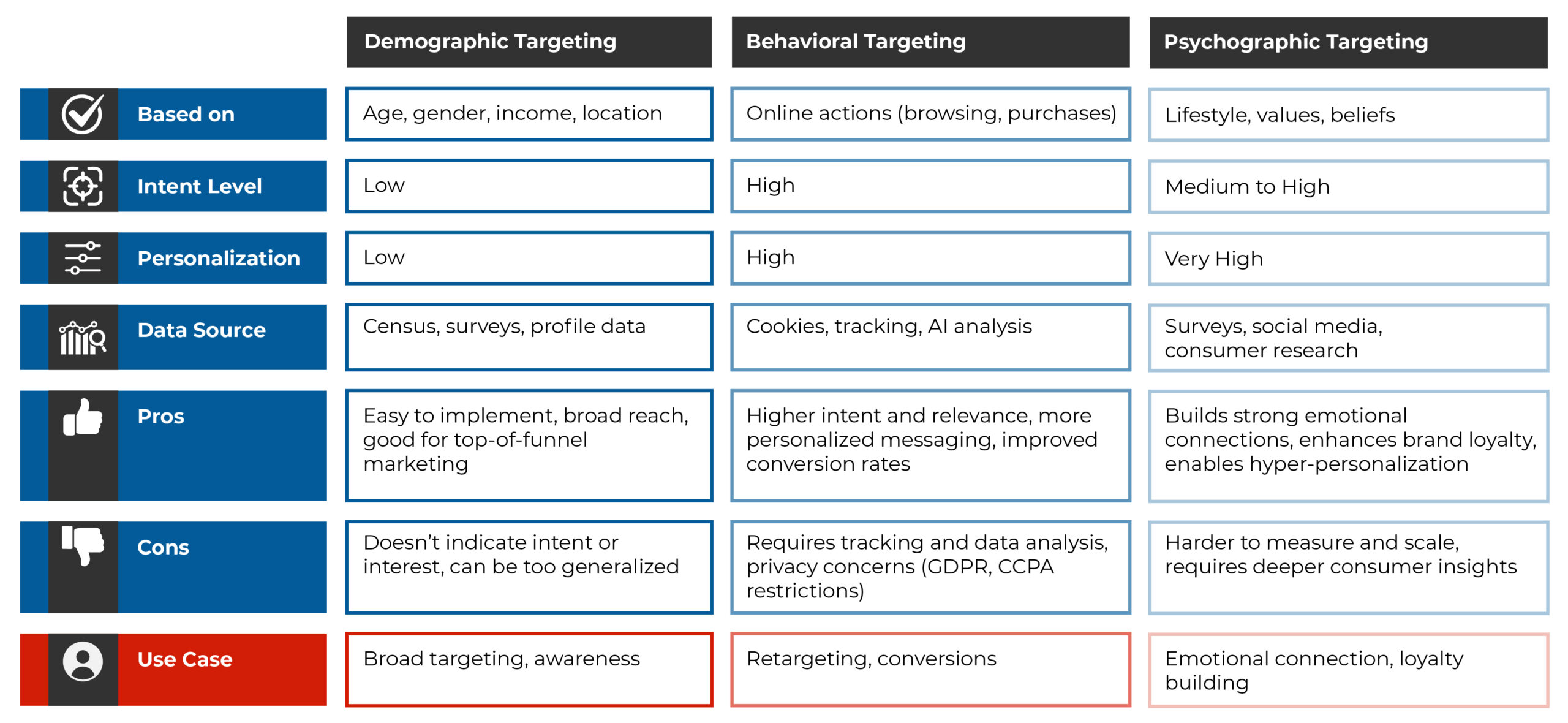
Comparing Digital Marketing Strategies to Engage Your Target Audience
In today’s digital advertising world, simply knowing your audience’s age or location isn’t enough. To truly connect with potential customers and drive conversions, marketers need to understand not only who their audience is but also what they do and why they do it.
Marketers should look at demographic, behavioral, and psychographic targeting with digital and social media advertising. Each method offers a unique approach to reaching the right customers, and the real power lies in combining them strategically.
Demographic Targeting: The Basics of Who
Demographic targeting is the most traditional method of audience segmentation, focusing on broad, measurable factors like age, gender, income, education, and location. It’s commonly used in mass-market advertising and is great for building brand awareness.
- Best for: Reaching a broad audience and general brand awareness.
- Examples: A fitness brand targeting women aged 25-45, a software business targeting specific job titles, or a yoga studio focusing on high-income households.
Behavioral Targeting: Understanding Actions
Behavioral targeting takes a step further by analyzing user actions, such as browsing history, past purchases, engagement with ads, and search behavior. This allows advertisers to serve ads to people who have already shown interest in similar products or services.
- Best for: Retargeting, increasing conversions, and engaging warm leads.
- Examples: An e-commerce site targeting users who abandoned their cart, a software company retargeting visitors who watched a video, or a yoga studio company marketing to frequent organic food shoppers.
Psychographic Targeting: The Power of Why
Psychographic targeting digs deeper, focusing on a person’s values, interests, personality, and lifestyle. This approach helps marketers craft emotionally resonant messages that connect with their audience’s motivations and beliefs.
- Best for: Brand loyalty, niche markets, and emotionally driven marketing.
- Examples: A fitness brand targeting individuals who prioritize holistic wellness, a software company marketing to integrators who value partnerships, or a yoga studio brand reaching sustainability-conscious consumers.
The Best Strategy for Using Them Together
While each method has its strengths, the most effective ad campaigns integrate all three. Start with demographics to define your broad audience, use behavioral data to target users actively engaging with relevant content, and refine with psychographics to ensure your messaging resonates on a deeper emotional level.
For example, a software company could:
- Use demographics to target small business owners.
- Leverage behavioral data to retarget those who visited their website.
- Apply psychographics to craft messaging that appeals to those who value efficiency and cost-saving solutions.
By combining these approaches, you can create more relevant, engaging, and high-converting ad campaigns that truly connect with your audience.
Ready to Get Started?
Amplimark specializes in creating tailored digital marketing and advertising approaches that resonate with your audience and drive growth. Review our portfolio and see how we’ve put these best practices to work. Contact us today to see how we can help strengthen your brand and boost results!

